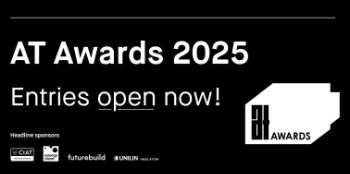Gulley

|
A gulley is a fitting with a chamber which is designed to collect rainwater, wastewater and groundwater, conveying it to an underground surface-water sewer. Gullies can be used to drain waste water and rainfall from buildings, large paved areas and roadsides, pedestrian areas, parking areas, pavements, roofs and so on.
Usually buried in the ground, the gulley’s configuration typically involves a chamber and a trap (sometimes referred to as a trapped gulley), while its top surface often has a grille over which a waste or rainwater pipe can discharge. Trapped gullies can also be used to take waste water from household sinks and baths. Thus, gullies can collect rainwater from roofs, impervious surfaces and waste water from buildings. When used to drain large areas, they are frequently called yard gullies or road gullies.
The gulley’s top grille is usually designed to prevent leaves, litter and large objects from blocking the system, while the trap – which can be a P-, Q- or S-type – prevents odours from escaping into the environment and can make it difficult for rats to reach the surface. Over time, the level of sediment collecting in a trap can cause blockages which may require manual removal or mechanical suction.
Traditionally, gullies were made from cast iron or vitrified clay, but these have been largely superseded by PVC which is both cheaper and lighter whilst still being durable.
When a trapped gulley features a below-ground inlet coming from another gulley or water source, it is termed a back-inlet gulley. The horizontal inlet is typically located below the top grille but above the level of the water seal. Many gulley types provide the facility to rod the system when a blockage occurs down the line.
A gulley can also be a grated opening in a road gutter; or in a hard-landscaped area to evacuate rainwater from the surface.
Gulleys can also be used internally, e.g buried in the floor in a wet room application.
[edit] Related articles on Designing Buildings Wiki
- Approved Document H.
- Difference between drains and sewers.
- Drainage stack.
- Drains.
- Grease management.
- Groundwater control in urban areas.
- Gully.
- Highway drainage.
- Invert
- Pipelines.
- Pipework.
- Public sewer.
- Rain gutter.
- Rainwater downpipe.
- Safe working in drains and sewers.
- Sewer construction.
- Sewerage.
- Soakaway.
- Soil vent pipe.
- Waste water.
- Water transfers and interconnections.
Featured articles and news
The Architectural Technology Awards
The AT Awards 2025 are open for entries!
ECA Blueprint for Electrification
The 'mosaic of interconnected challenges' and how to deliver the UK’s Transition to Clean Power.
Grenfell Tower Principal Contractor Award notice
Tower repair and maintenance contractor announced as demolition contractor.
Passivhaus social homes benefit from heat pump service
Sixteen new homes designed and built to achieve Passivhaus constructed in Dumfries & Galloway.
CABE Publishes Results of 2025 Building Control Survey
Concern over lack of understanding of how roles have changed since the introduction of the BSA 2022.
British Architectural Sculpture 1851-1951
A rich heritage of decorative and figurative sculpture. Book review.
A programme to tackle the lack of diversity.
Independent Building Control review panel
Five members of the newly established, Grenfell Tower Inquiry recommended, panel appointed.
Welsh Recharging Electrical Skills Charter progresses
ECA progressing on the ‘asks’ of the Recharging Electrical Skills Charter at the Senedd in Wales.
A brief history from 1890s to 2020s.
CIOB and CORBON combine forces
To elevate professional standards in Nigeria’s construction industry.
Amendment to the GB Energy Bill welcomed by ECA
Move prevents nationally-owned energy company from investing in solar panels produced by modern slavery.
Gregor Harvie argues that AI is state-sanctioned theft of IP.
Heat pumps, vehicle chargers and heating appliances must be sold with smart functionality.
Experimental AI housing target help for councils
Experimental AI could help councils meet housing targets by digitising records.
New-style degrees set for reformed ARB accreditation
Following the ARB Tomorrow's Architects competency outcomes for Architects.
BSRIA Occupant Wellbeing survey BOW
Occupant satisfaction and wellbeing tool inc. physical environment, indoor facilities, functionality and accessibility.























